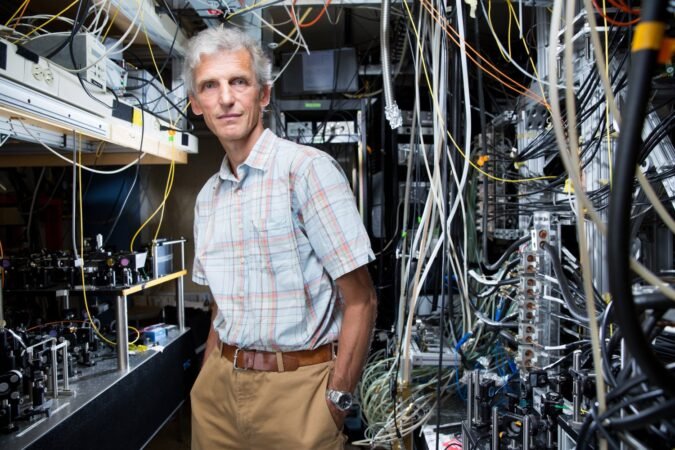Quick Takeaways
-
The MIT-Harvard Center for Ultracold Atoms (CUA) received renewed funding from the U.S. National Science Foundation to explore advanced quantum phenomena and enhance control over quantum-entangled systems.
-
The CUA’s research will include experiments on quantum gases, Rydberg atoms, atom-like impurities in semiconductors, and strong coupling between light and matter, with implications for measurement and networking applications.
-
This funding supports both ongoing scientific endeavors and the development of the next generation of researchers through training and mentorship programs, benefiting students and postdocs in physics.
- The NSF’s Physics Frontiers Centers program, which includes CUA among four funded centers, emphasizes collaborative, long-term research and aims to drive breakthroughs in scientific understanding and technology.
MIT Awarded Grant for Quantum Science Exploration
The U.S. National Science Foundation (NSF) has renewed its grant to the MIT-Harvard Center for Ultracold Atoms (CUA). This funding aims to advance research in quantum science. The grant represents a significant financial injection for projects at the cutting edge of physics.
The CUA focuses on controlling quantum-entangled systems at ultra-low temperatures. Researchers will explore quantum gases of atoms and molecules. They will also study exotic atoms in Rydberg states. Additionally, they will investigate atom-like impurities in semiconductors. One exciting aspect of their research involves "strong coupling," which links light and matter. This phenomenon holds promise for new applications in measurement, sensing, and networking.
Professor Wolfgang Ketterle expressed excitement about the renewed funding. He noted the support is crucial for both current projects and new researchers coming into the CUA. "The funding makes a big difference for our community of researchers," Ketterle said.
Deepto Chakrabarty, head of MIT’s physics department, echoed these sentiments. He called the funding renewal "fantastic news" for MIT’s role in quantum science. Ketterle leads a group of distinguished researchers, including Vladan Vuletic, Martin W. Zwierlein, and Isaac Chuang, all contributing to this innovative work.
The NSF awarded a total of $76 million across four U.S. research centers, which include the University of Chicago, Caltech, and the University of Colorado at Boulder. These centers emphasize collaborative research, requiring diverse expertise and specialized tools.
Moreover, NSF’s Physics Frontiers Centers contribute to training the next generation of scientists. They offer mentorship programs for undergraduates, graduates, and postdoctoral researchers. These initiatives also engage middle and high school students in STEM through fun activities like workshops and educational games.
"Research teams have made groundbreaking discoveries, such as new states of matter," said NSF Director Sethuraman Panchanathan. He highlighted the importance of collaborative efforts to push the boundaries of scientific exploration. The renewed funding for MIT and its partners encourages innovation and strengthens the scientific workforce in the United States.
As researchers embark on this frontier, new technologies and discoveries may revolutionize our understanding of the universe. The commitment from NSF empowers scientists to explore uncharted territories in physics, potentially leading to transformative advancements.
Continue Your Tech Journey
Dive deeper into the world of Cryptocurrency and its impact on global finance.
Stay inspired by the vast knowledge available on Wikipedia.
QuantumV1
https://news.mit.edu/2023/mit-receives-major-nsf-grant-quantum-science-1018

